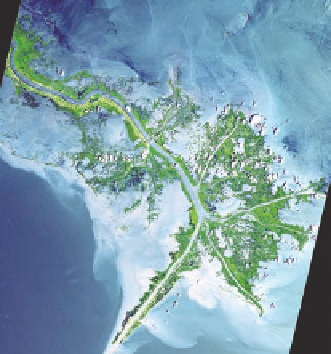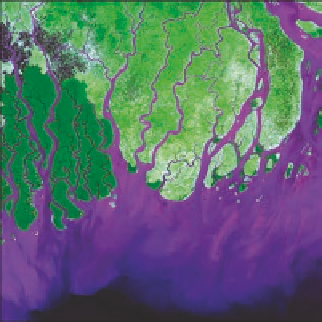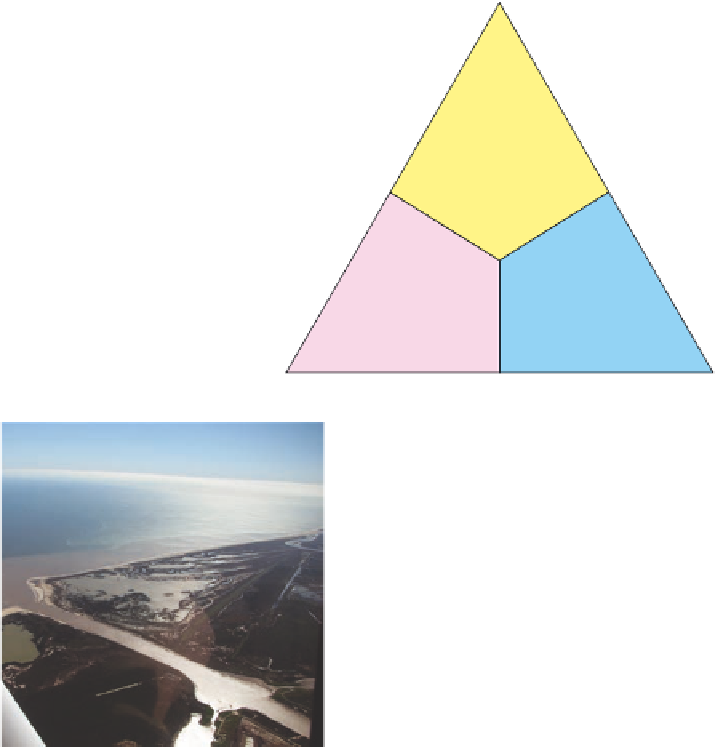Geoscience Reference
In-Depth Information
Impact of Coastal Processes on Delta Form
As dis-
cussed in Chapter 16, one of the most interesting landscapes on
Earth is the place where a river meets the ocean to form a delta. Del-
tas are noteworthy purely in the context of fluvial processes because
they mark the location where sediment from the continental interior
is deposited due to very low stream gradients and reduced veloc-
ity. These places are also fascinating from the standpoint of various
coastal processes because their overall form is directly related to
the influence (or lack thereof) they have on the delta as it develops.
The most common way to examine delta form is to consider
whether waves, tides, or fluvial processes dominate the coastline at
any given place. Although many deltas are influenced equally by
both waves and tides, or fluvial processes and waves, it is instruc-
tive to consider their shape as it relates to the singular dominance
of any particular process. This triangular relationship is shown in
Figure 19.29. As you examine the corners of this diagram, remem-
ber that a continuum of delta forms actually exists and that you are
observing the extreme examples of each kind at this level.
Figure 19.29 Influence of coastal
processes on delta form.
A dis-
tinct relationship exists between
delta form and the dominance of
fluvial processes, waves, or tides.
(a) River-dominated deltas, such as
the Mississippi, are elongated be-
cause river competence exceeds
the force of waves or tides. (b)
Wave-dominated deltas, such as
the Brazos River in Texas, are cus-
pate because strong waves push
sediment backward. (c) Tide-dom-
inated deltas, such as the Ganges
in India, have high tide ranges and
velocities that create numerous tidal
inlets.
(a)
Rivers
River
dominated
Wave
dominated
Tide
dominated
Waves
Tides
(b)
(c)



